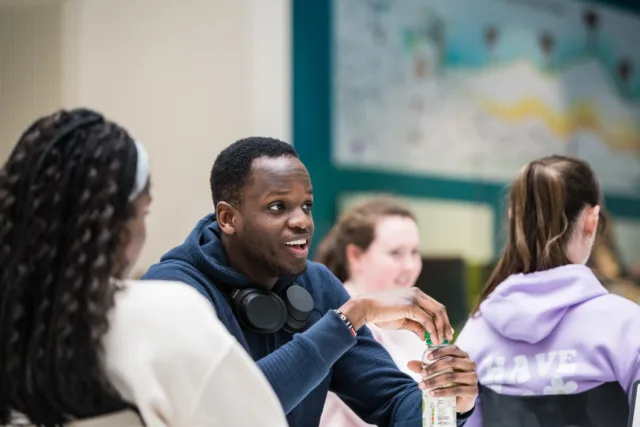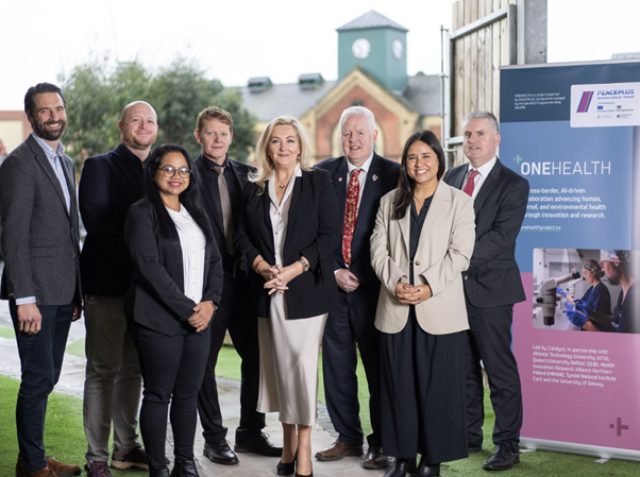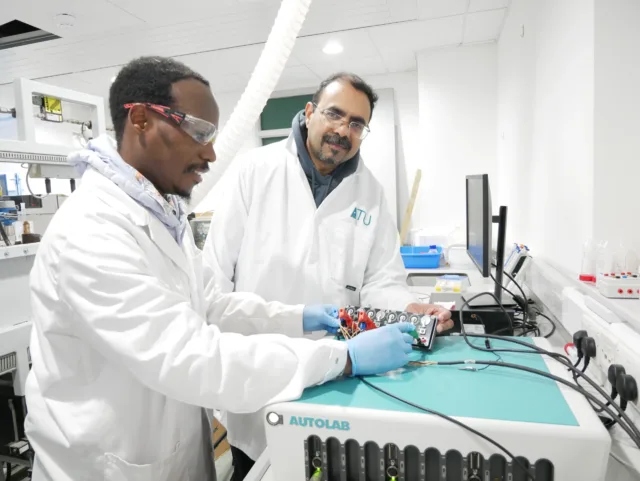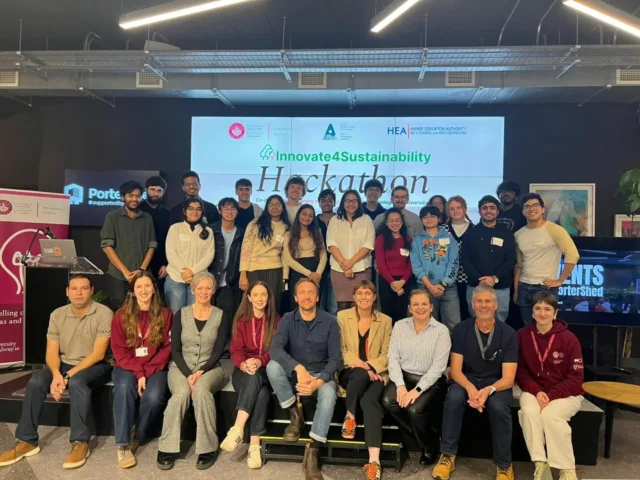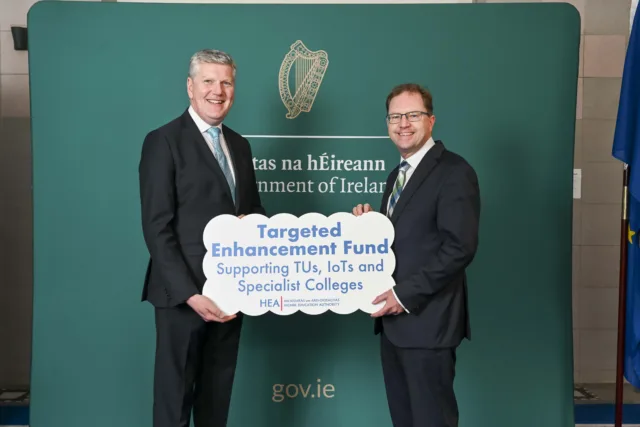Courses
ATU leads 2nd major survey of underwater noise levels at Strait of Gibraltar
A team of 19 scientists led by ATU postdoctoral researcher Dr María Pérez Tadeo (Chief Scientist) has concluded its second major survey of underwater noise levels from the Strait of Gibraltar to Irish waters under an EU funded project aimed at protecting and conserving habitats of sea animals and improving tracking in European waters.
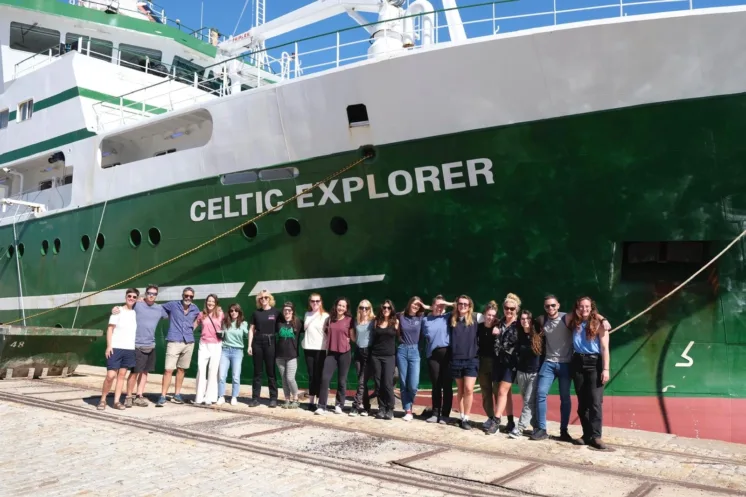
The “Acoustic Monitoring from Ireland to Gibraltar Oceanic waters Survey (AMIGOS II)” was conducted on board the RV Celtic Explorer over the past 10 days by scientists from ATU, the University of Southampton, the Irish Whale and Dolphin Group, the Spanish Oceanographic Institute, and the consultancy Irwin Carr including four ATU Masters students and multimedia artist Simone Kessler. The vessel returns to Ireland (Cork) tonight, 14 October.
Ship-time was funded under the Marine Institute ship-time award.
The survey findings will contribute to data collection as part of the four-year project called STRAITS (Strategic Infrastructure for improved animal Tracking in European Seas, https://www.europeantrackingnetwork.org/en/straits), funded under the EU’s Horizon research and innovation programme, in which ATU is one of the partners with ATU Marine Scientist Dr Joanne O’Brien as the Principal Investigator.
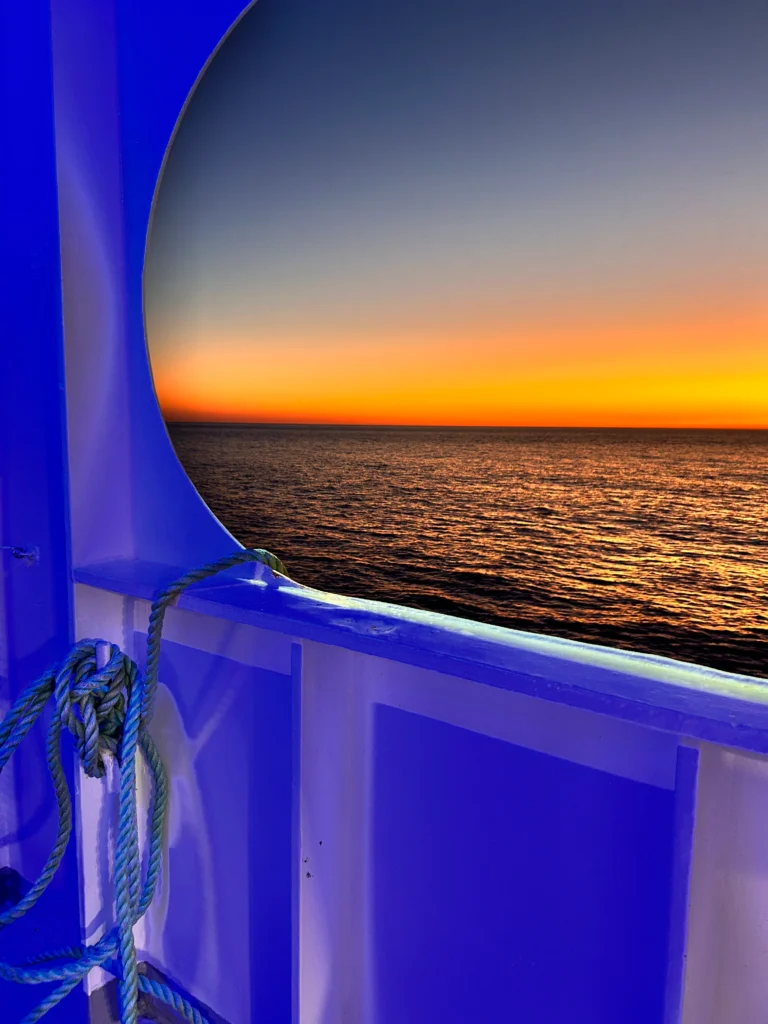
(photo by María Pérez Tadeo)
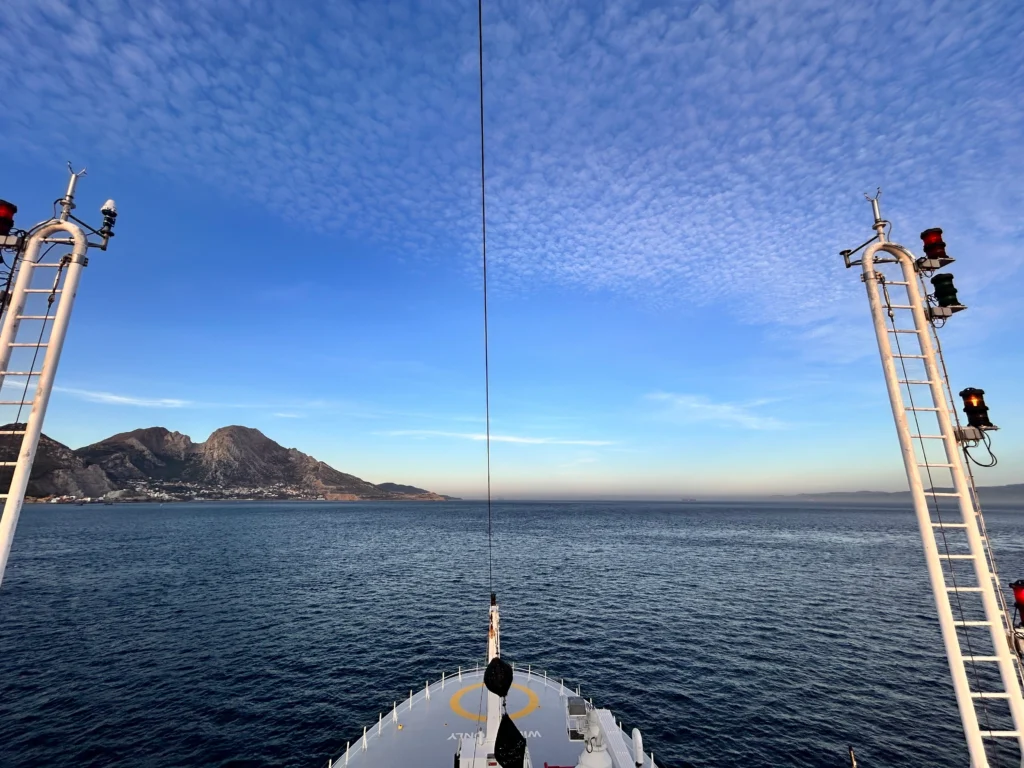
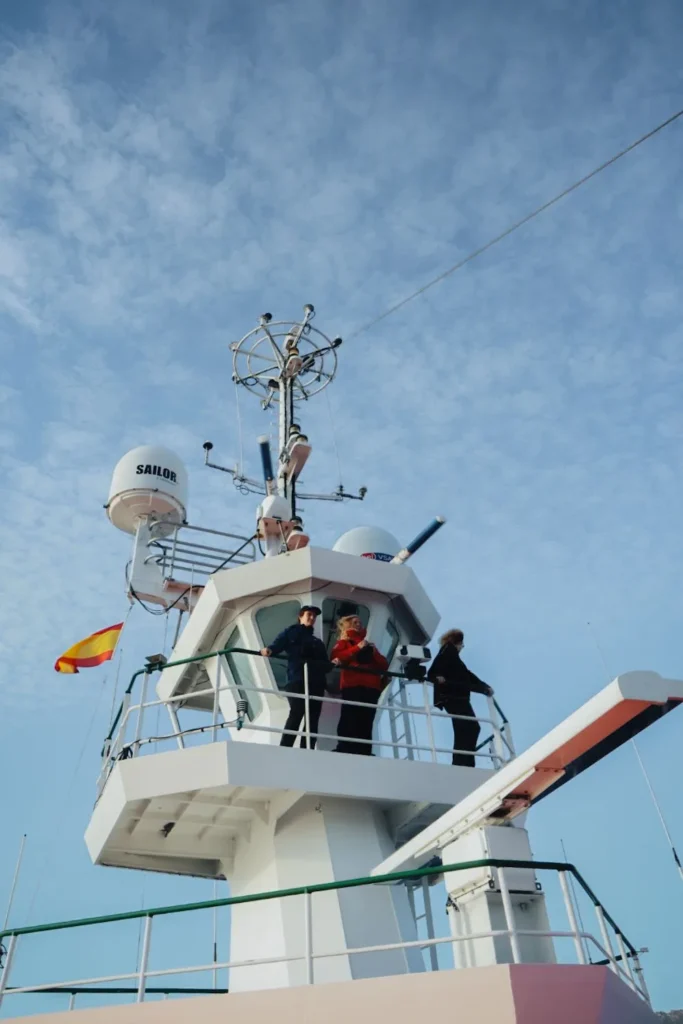
María Pérez Tadeo, Chief Scientist on this expedition, says: “Data was collected from a key study area which will be compared to other underwater acoustic data already collected in European Straits, including the North Channel, the Sound, and the Dardanelles Strait last year (2024). This first survey shows high underwater noise levels in the area”.
The Strait of Gibraltar is one of the most important European shipping lanes in Europe, being the connection between the Mediterranean Sea and the north Atlantic ocean. The intense maritime traffic in the area overlaps with the presence of both resident and migratory cetacean species, including short-beaked common, striped, and bottlenose dolphins, long-finned pilot whales, sperm whales, killer whales, fin whales, and Cuvier’s beaked whales.
As cetaceans rely heavily on sound for communication, navigation and prey detection, they are especially vulnerable to anthropogenic ocean noise which can impair their hearing abilities and compromise their survival.
Cetaceans are strictly protected under the European Union’s Habitats Directive (92/43/EEC), and as Annex IV species, their habitats are strictly protected within the Exclusive Economic Zones (EEZs). Furthermore, disturbances caused by underwater noise must be assessed to ensure compliance with the EU Habitats Directive and the Marine Strategy Framework Directive (MSFD).”
Dr Joanne O’Brien, Principal Investigator and lecturer, ATU, adds:
The AMIGOS II survey brings together oceanographers, biologists and acoustic experts to better understand how human activity and natural processes shape the soundscape of our seas. This survey is contributing to the overall STRAITS project led by the Loughs Agency and the knowledge the team gain is vital for protecting marine ecosystems while also supporting the sustainable use of our ocean resources.
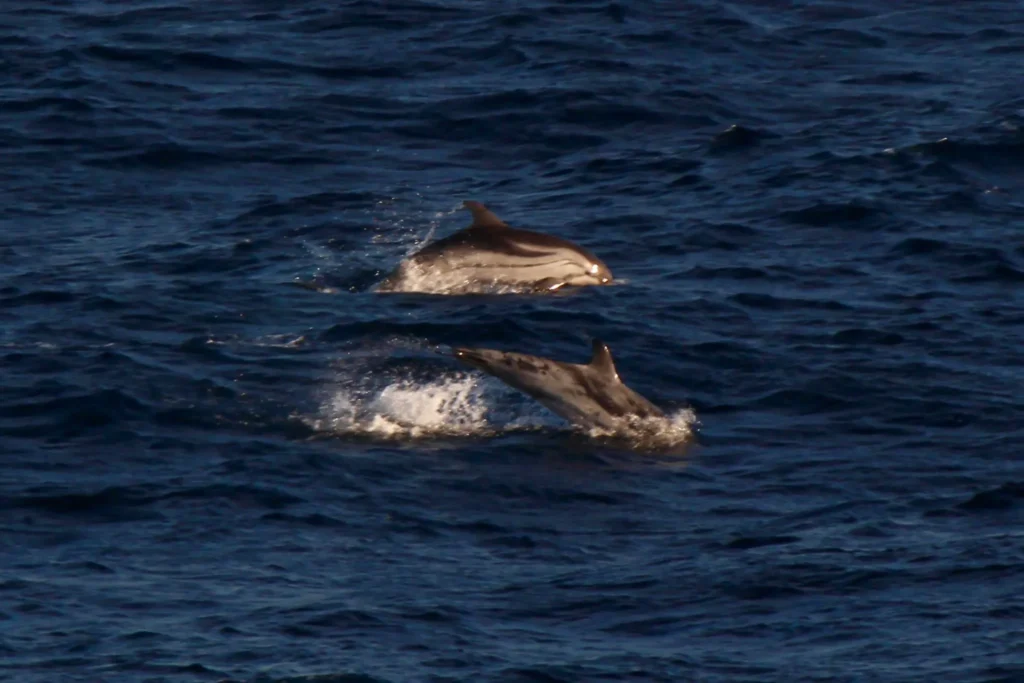
The scientists collected underwater acoustic data using a towed hydrophone and conducting acoustic stations by deploying acoustic devices such as SoundTraps and F-PODs to assess underwater noise levels and detect the presence of cetaceans.
They conducted visual surveys for marine mammals, other megafauna, and seabirds, while measuring oceanographic parameters such as temperature and salinity at different stations along the route.
A thermal camera was installed on the vessel as part of the Atlantic Whale Deal project, which aims to develop technology to reduce vessel collisions with cetaceans. In addition, two researchers from the Spanish Oceanographic Institute joined the survey to recover an array of acoustic receivers in the Strait of Gibraltar as part of the STRAITS project. These devices are used to track the movements of fish species that have been previously tagged.
Student experience
Louise Constandt from Belgium, second year student on the International MSc in Marine Biological Resources (MBRSea) programme, says: “It’s amazing to see all the equipment we’ve learned about these past years being used in real life such as watching the CTD, equipment used to collect oceanographic parameters, go into the water and then seeing the data appear on the screen right after and understanding what it means. I’ve also been trying to identify different seabird species by looking at their plumage, the way they fly, and other little details, it`s a fun challenge. Life at sea has been incredible. The weather was great, and the sunsets over the Strait of Gibraltar, with dolphins swimming next to the boat felt like a dream”.
Read about the launch of the project here.
To explore ATU programmes in this discipline, please see:
Applied Freshwater and Marine Biology – Atlantic Technological University
International Marine Biological Resources – Atlantic Technological University
Additional details are available at https://mfrc-atu.ie or follow @MfrcATU, or listen to ATU Podcast as Dr Joanne O’Brien and Dr María Pérez Tadeo, describe the project following its launch in July (2023).
For further information please contact:
Regina Daly, ATU Communications Officer,
Dublin Road, Galway
Tel: +353 (0)91 742826 Mob: +353 (0)879618355
regina.daly@atu.ie www.atu.ie/news

